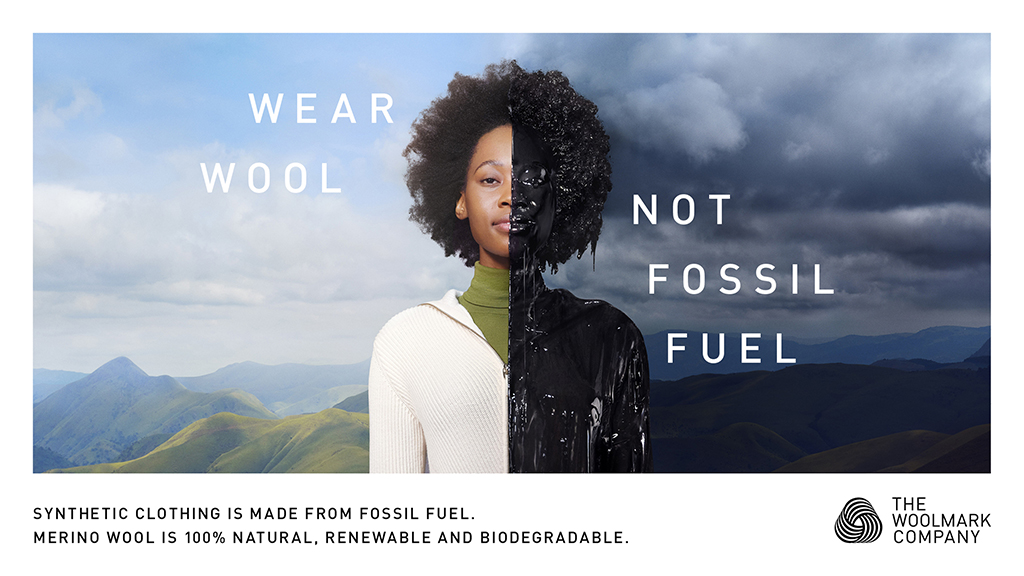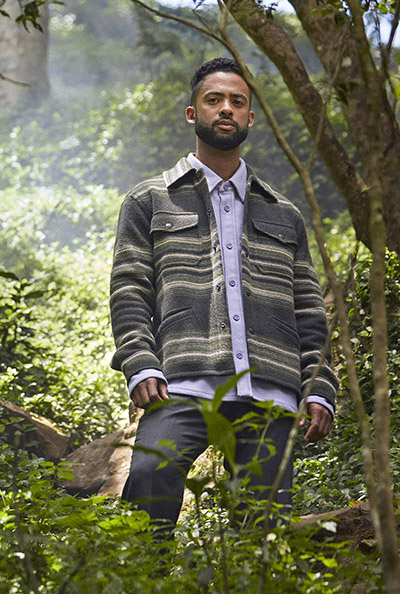
The Woolmark Company supports the movement towards a sustainable fashion industry, working with industry, government and consumers to enact change around social and environmental issues within the fashion industry. As the global authority on wool, The Woolmark Company has been inspiring change and investing in scientific solutions right across the supply chain, from sheep to shop and through to the end consumer.
In a culmination of years of work, today, The Woolmark Company launched a global direct to consumer campaign focussed on making explicit the link between clothes, material and impact.
Taking a closer look at the wool supply chain
To help drive the much-needed reduction in industry footprint and transition towards a circular economy, The Woolmark Company has been researching each supply chain stage to better understand wool’s environmental hotspots, strengths and the disparity between the internal and external environmental assessment of the supply chain.

The Woolmark Company has performed the world’s first textile fibre full life cycle assessment (LCA) study of the wool supply chain, that highlights the challenges the industry is facing to improve its environmental footprint. These include GHG emissions, reliance on fossil fuels, water stress, water use and land use. Through collaboration with government and RDCs, The Woolmark Company has invested in GHG mitigation strategies, which represent the best approach to significantly reduce wool’s GHG impact but currently lack effective technology.
The LCA study showed that garment lifetime is the most influential factor for determining a fibre’s impact – a long garment lifetime improves fibre sustainability due to reduced impact from production. As the most reused and recyclced fibre of all textile types, wool has a service life at least 50% longer than other fibre types.
The inherent circularity properties of wool
The textiles sector is criticised for an increasing demand for products made from virgin fibre. This has led to a global investigation into transitioning from the linear model of production to a model of circularity.

Circular design in the textile industry uses regenerative materials, keeps garments in use and provides pathways for reuse, recycling and biodegradation at end-of-life. The circular model is well-established in wool – for more than 200 years the industry has practiced both open- and closed-loop recycling.
Designing for circularity is easy with wool’s inherently circularity properties:
• Wool is a renewable fibre with annual regrowth cycles.
• Growing wool can regenerate natural systems and help build soil carbon. Sheep typically live on land not used for growing food crops, and woolgrowers maintain biodiversity.
• Wool does not contribute to microplastic pollution. Garment construction, dyeing and finishing innovations reduce pollution.
• Of the major apparel fibres, wool is the most reusable and recyclable fibre on the planet with high heritage and secondhand value. Less laundering is needed, which not only saves time but also money, energy and water.
• Wool is highly valued in closed and open-loop recycling systems with a commercially viable pathway.

The Woolmark Company works to provide support tools and resources to enable designers and brands to utilise wool’s innate circularity and ultimately reduce industry impact.
Calling for a level playing field in textile LCAs
The Woolmark Company is working to improve environmental rating methods for textiles, with a focus on the EU’s Product Environmental Footprint (PEF) method. Proposed PEF methodology is currently incomplete. It currently downplays or excludes critical environmental impacts and does not reflect the EU’s own sustainability and circularity goals.
This means that natural fibres such as Merino wool, which, in its pure form, is a 100% natural and 100% biodegradable fibre as well as being renewable, may be scored as ‘less sustainable’ than synthetic fibres under the current PEF methodology.
As such, we are a supporter of the Make the Label Count campaign, which brings together an international coalition of organisations who wants to ensure clothing sustainability claims in the EU are credible.
Making the link between synthetic fibres and fossil fuels
Today, The Woolmark Company launched a 360-degree impactful consumer campaign that aims to help make fibre composition a key consideration during the consumer purchase journey.
People don’t like synthetic material.
They think it’s man-made.
They think it’s bad for the environment.
Yet they buy synthetic clothing more than any other kind.
Every 25 minutes, an Olympic-sized pool of oil is used to make fossil fashion. Over the past 20 years, the fashion industry has become one of the world’s most polluting, resource-intensive and wasteful sectors. This has been enabled by cheap synthetic fibres, which are produced from fossil fuels, mostly oil and natural gas.

Research conducted by The Woolmark Company has shown that, while more than a third of global consumers say they are willing to pay more for sustainability, fibre consideration does not feature in the purchase journey at all.
The Woolmark Company has launched a global educational campaign to help consumers make the connection between synthetic fibres and fossil fuels, encouraging fibre composition to be a key consideration when purchasing a new garment.
Many wools, including Merino, have innate properties which align with principles of a circular economy. These include fibre durability and easycare properties that stands to elongate the useful life, fibre recyclablility to facilitate best practice at the end of useful life, and biodegradability and renewability to elevate dependence on finite fossil fuels and polluting, non-biodegradable.